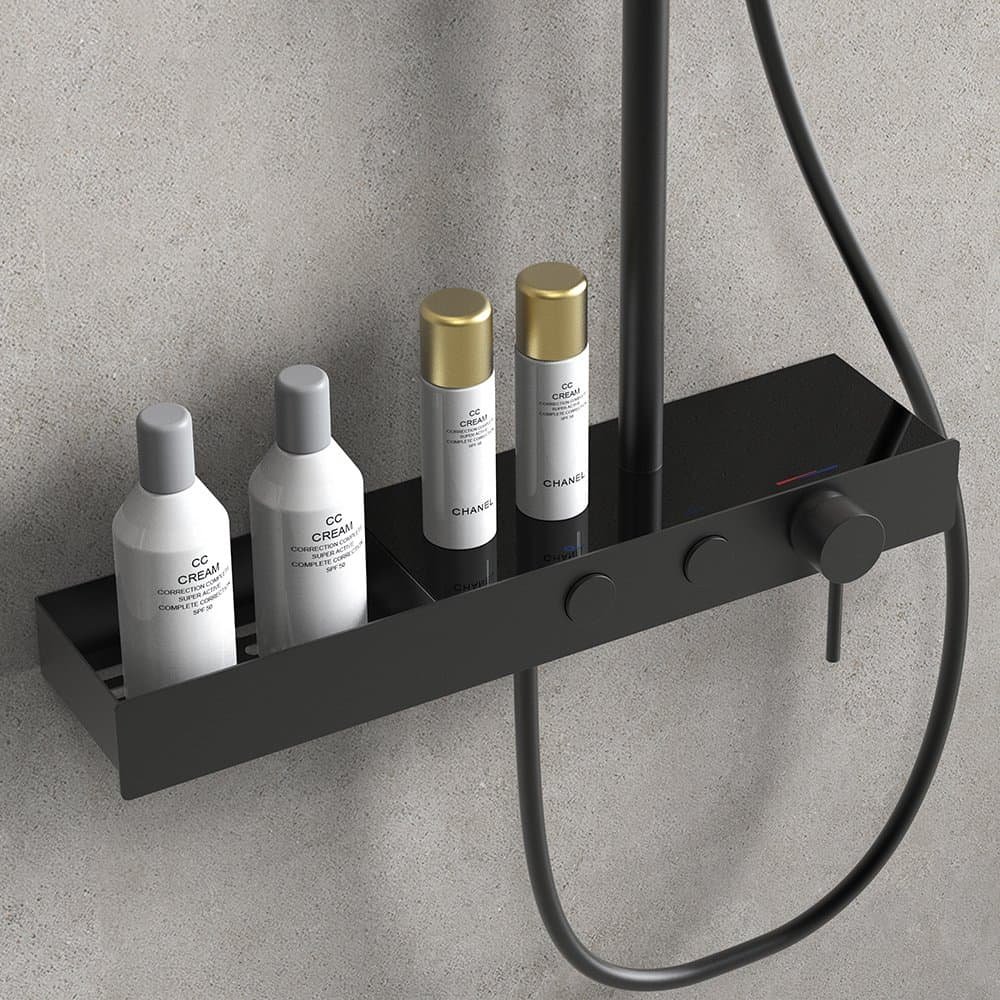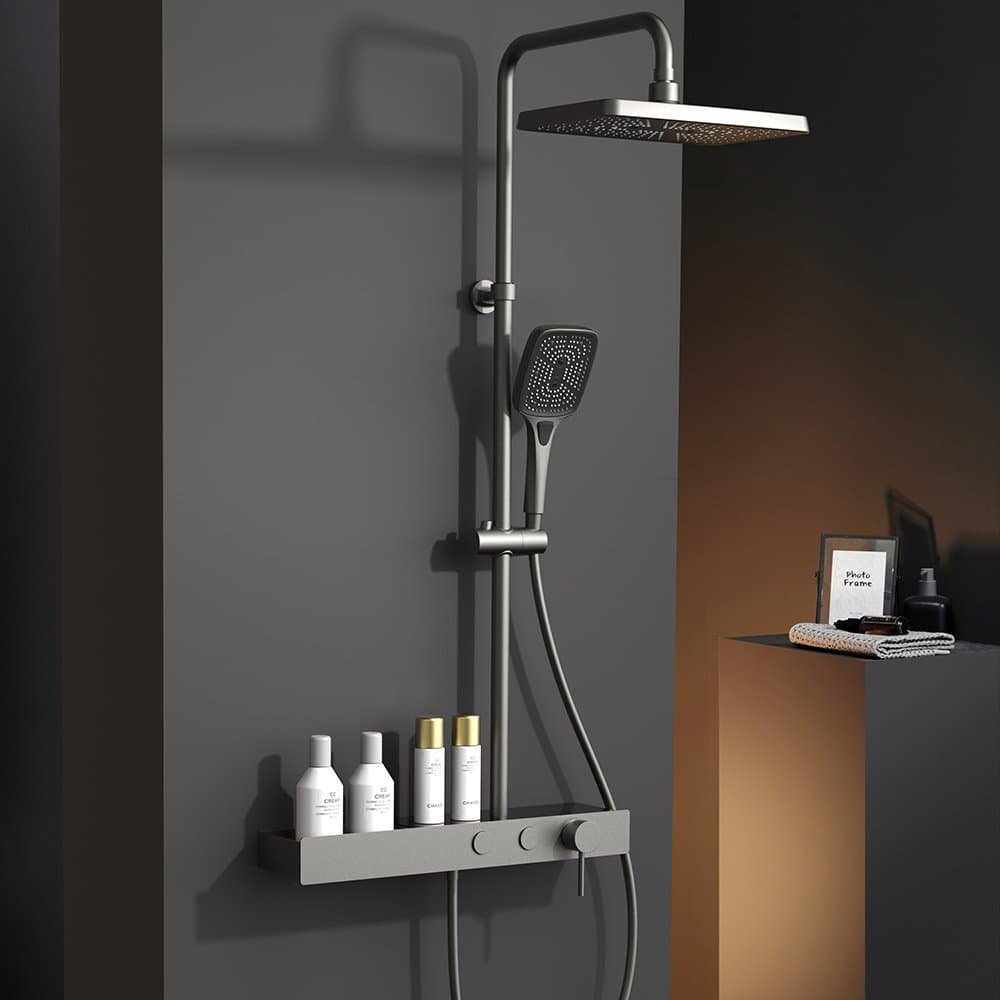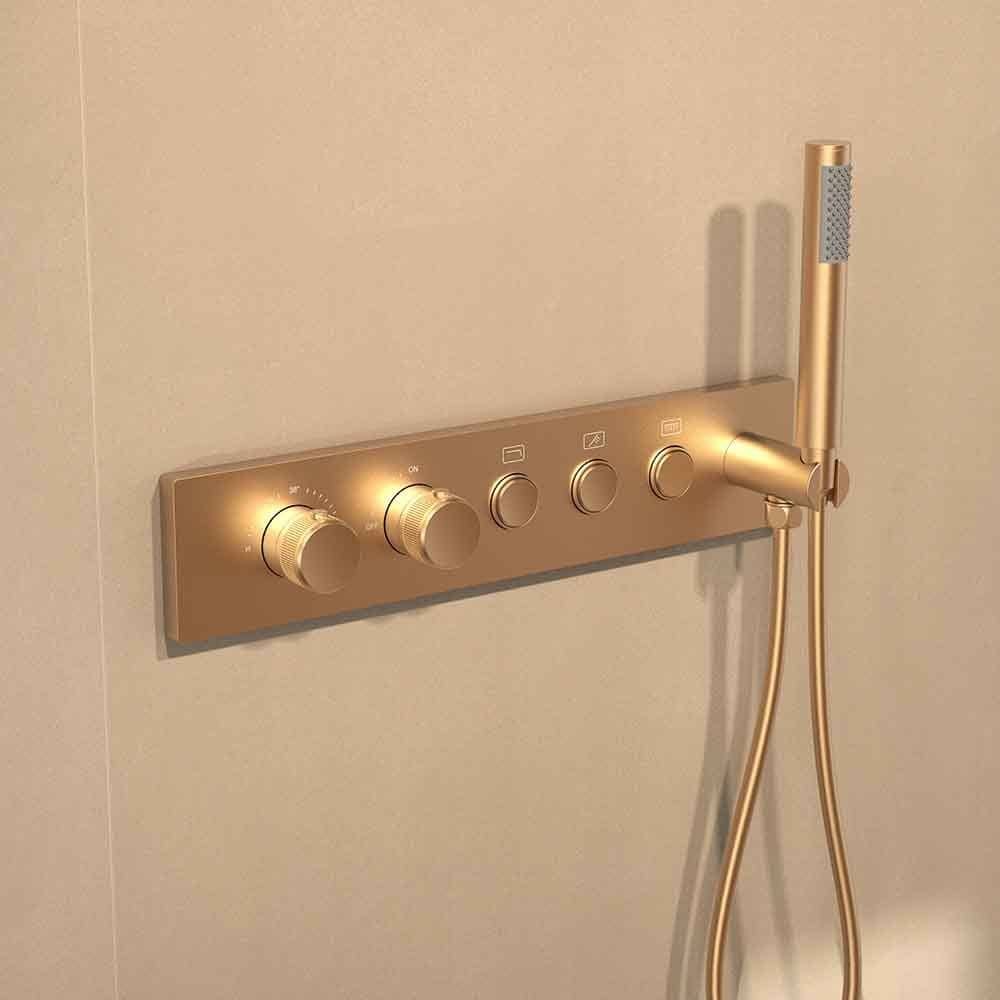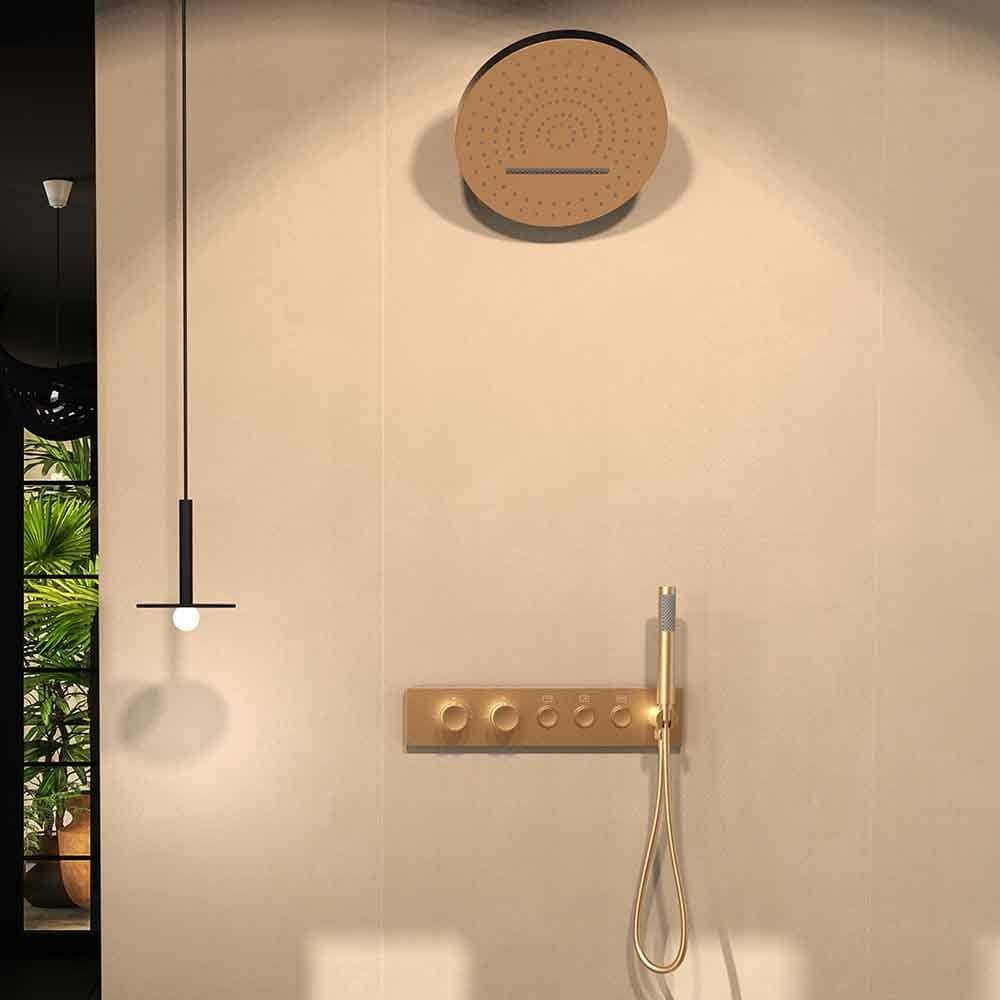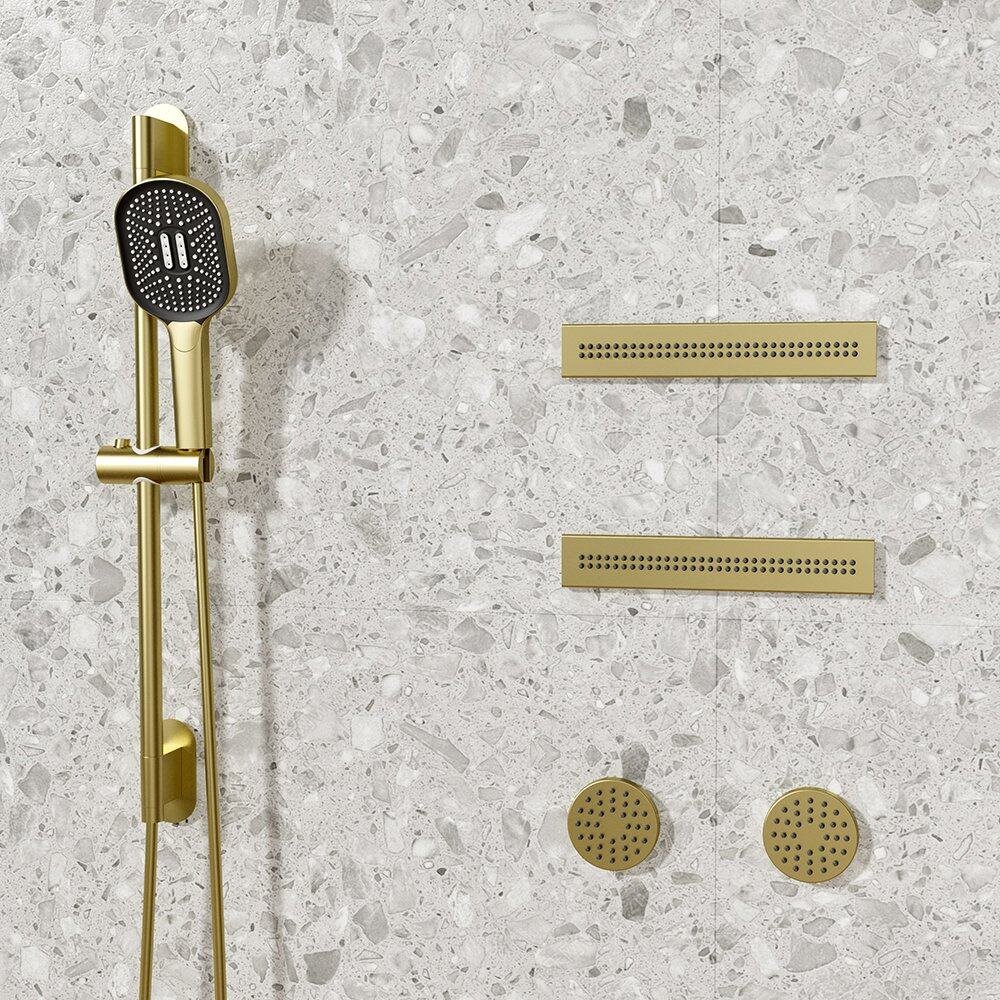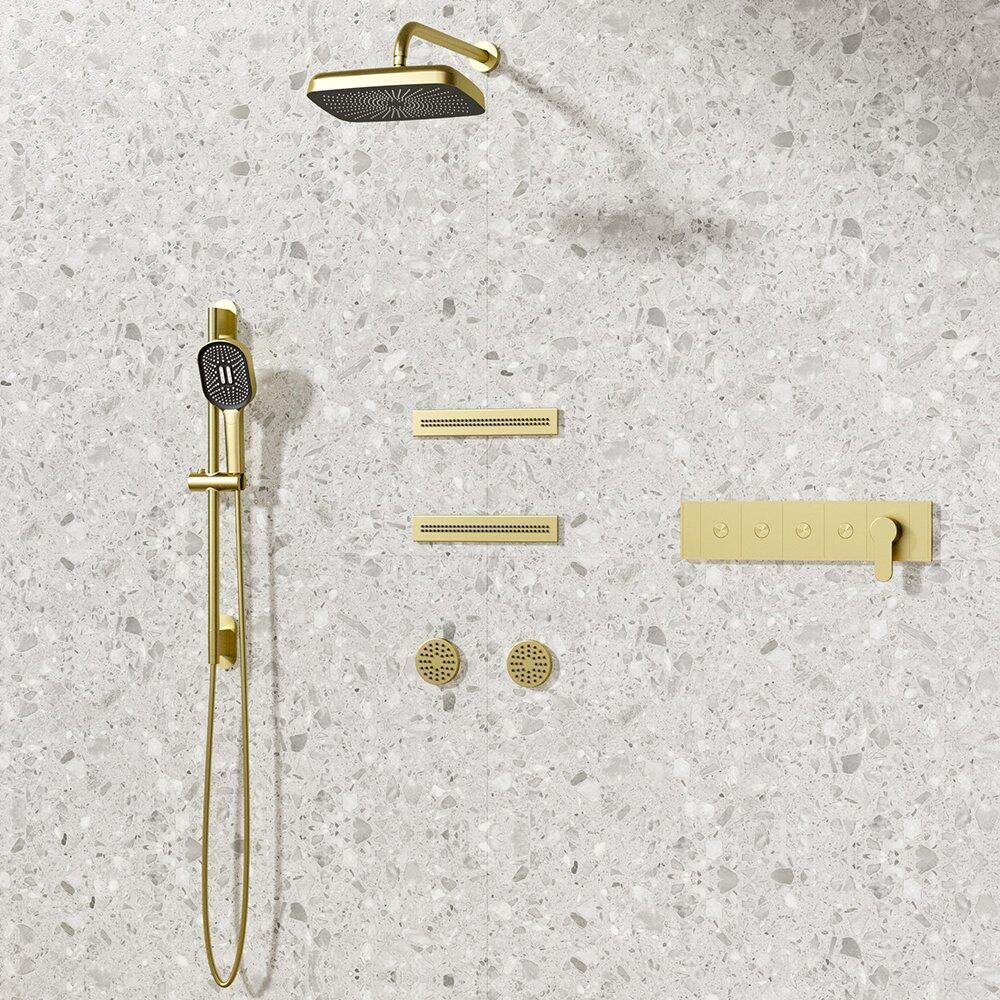I know how it feels. You’re standing in the home improvement store, staring at a wall of shower hoses, and you have no idea which one to pick. They all look pretty similar, and you’re just hoping to grab something that won’t leak, break, or get tangled in a month.
In this guide, I’m going to walk you through everything you need to know, from the hidden parts you can’t see to the small details that make a huge difference. I’ll break down the real secrets of a shower hose, explain the differences between materials, and give you a simple, step-by-step plan so you can make a choice you feel completely confident about.
Let’s dive in.
Table of Content
- The structure of the shower hose: a multi-layer composite system
- Material Showdown: Stainless Steel vs. PVC
- The Art of Choosing: Beyond Price and Appearance
- The Economics of Quality: Balancing Price and Value
- Frequently Asked Questions and Expert Troubleshooting
- Installation and Long-Term Maintenance Guide
- Conclusion: The Final Consideration for a Wise Investment
- FAQs
The structure of the shower hose: a multi-layer composite system
A shower hose is more than a simple pipe connecting your faucet to the showerhead. It provides the flexibility and reach needed for tasks like rinsing hair, cleaning the stall, or bathing pets and children. Its performance directly affects shower comfort, working seamlessly with your system to deliver perfect water flow.
To choose the best one, start with its anatomy: a shower hose is a multi-layered system with three key functional layers that work together.
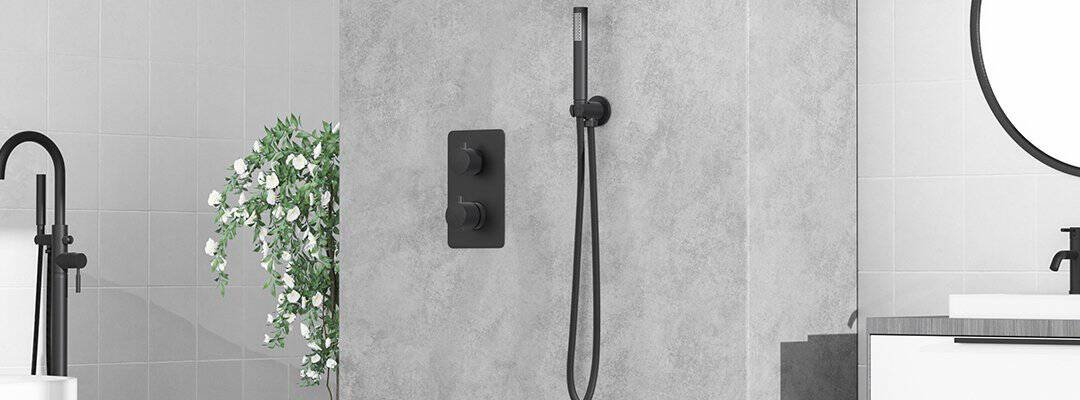
Inner Tube: The Core of Water Flow and the First Line of Health Protection
The inner tube is the main channel that delivers water and comes into direct contact with it, so its material is crucial for water hygiene and safety. Common materials include PVC, polyethylene, and silicone.
The inner tube often determines the true value of a shower hose. While many focus on the outer tube’s appearance and durability, water only flows through the inner tube. Low-quality plastics may release harmful phthalates in hot water and promote scale or biofilm buildup. High-quality, drinking-water-grade inner tubes prevent these issues, ensuring safe, clean water—making a high-end hose a long-term investment in health.
Outer Tube: A Protective Shell with Aesthetic Appeal
The outer tube, or sheath, forms the shower hose’s external structure. It protects the inner tube from stretching, twisting, and wear, while also defining the hose’s appearance and style to match the bathroom design.
Common materials include stainless steel and plastic. Some metal hoses use special weaves like “double interlock” to resist kinks and abrasion. Premium models may add a plastic coating to prevent scratches and tangling, combining functionality with aesthetics.
Connectors and Sealing Rings: The Guarantee of Watertightness
The connectors at both ends link the shower hose to the faucet and handheld showerhead. Their material and quality determine durability and watertightness, with plastic or brass being common.
Rubber or fiber washers inside act as the final barrier against leaks. Over-tightening, especially on plastic connectors, can cause cracks and leaks. Proper installation usually requires hand-tightening only, unless the connector is designed for a wrench.
Material Showdown: Stainless Steel vs. PVC
Manufacturers typically build shower hoses from two main material categories: stainless steel (metal) and polyvinyl chloride (PVC/plastic). Each material comes with distinct advantages and disadvantages, making it suitable for different needs and budget considerations.
| Material | Pros | Cons | Best for… |
|---|---|---|---|
| Stainless Steel | Extremely durable, corrosion-resistant, high-pressure suitable, premium look | Heavier, may scratch tub/tile, collects grime | Users who prioritize durability, a premium feel, and long-term investment |
| PVC/Plastic | Lightweight, flexible, affordable, won’t scratch surfaces, easy to clean | Less durable, can become brittle, more likely to kink | Users on a budget, those who want a lightweight feel, and easy maintenance |
| Chrome-Plated Plastic | Lightweight, has a metal-like appearance, easy to clean | Not as durable as metal, the coating may wear off over time | Users who want a metallic look without the weight or cost |
| TPE/Silicone | Lightweight, flexible, highly durable, strong heat resistance, non-toxic | More expensive, less common on the market | Users focused on health, safety, and a premium, long-lasting experience |
Stainless Steel Hoses: A Symbol of Durability and Quality
Stainless steel hoses have earned a reputation for exceptional durability and strength, making them the preferred choice for many premium shower systems.
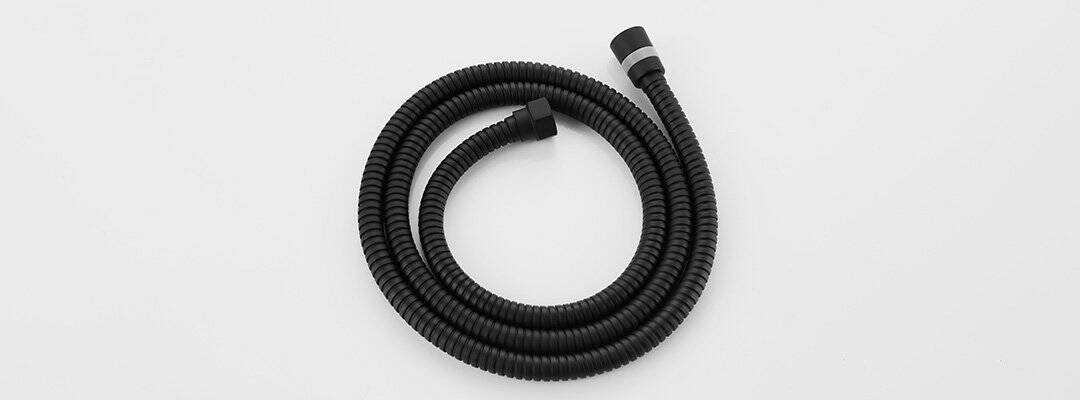
- Advantages:
- Outstanding durability: Stainless steel resists high water pressure and everyday wear, giving it a lifespan far longer than plastic hoses.
- Corrosion and rust resistance: Stainless steel naturally resists moisture, water, and cleaning chemicals, making it ideal for humid bathroom environments.
- Anti-kink performance: Its inherent rigidity, combined with advanced weaving techniques such as double interlock, effectively prevents twisting or tangling during use, ensuring smooth water flow.
- Premium aesthetics: The polished surface of stainless steel delivers a modern, elegant look that pairs perfectly with chrome-finished showerheads and faucets.
- Disadvantages:
- Heavier weight: Compared with lightweight plastic hoses, stainless steel feels heavier in hand, which some users may find less comfortable.
- Potential to scratch surfaces: The hardness of metal can cause scratches on bathtubs, shower enclosures, or ceramic surfaces when in contact.
- Cleaning challenges: Its spiral grooves tend to trap limescale and dirt, requiring more frequent and thorough cleaning.
PVC/Plastic Hoses: A Lightweight and Affordable Choice
PVC hoses dominate the market thanks to their light weight, flexibility, and budget-friendly price point.
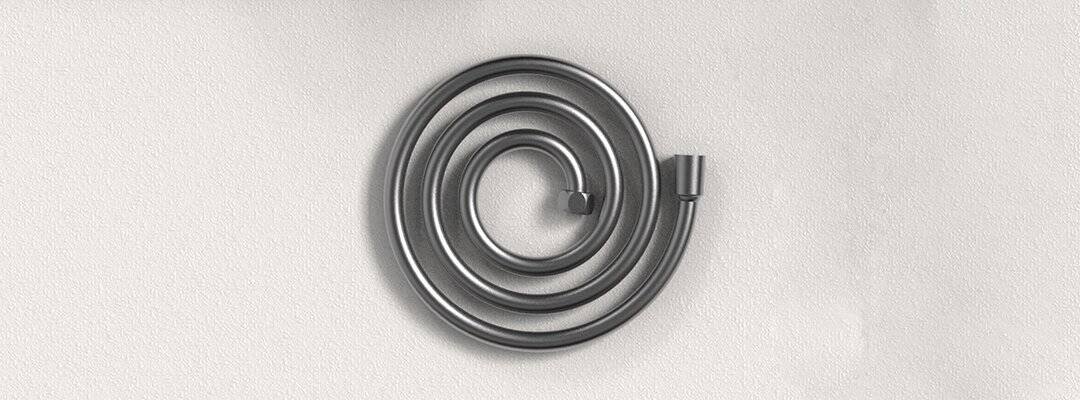
- Advantages:
- High flexibility: PVC hoses bend and maneuver easily, making them especially practical in tight spaces.
- Lightweight design: Their light weight offers a comfortable grip, even during extended use.
- Surface-friendly: Plastic hoses do not scratch bathtubs or tiles and pose no risk of catching skin or hair.
- Easy to clean: The smooth, groove-free surface resists dirt and buildup, making them simpler and more hygienic to maintain compared to metal hoses.
- Disadvantages:
- Lower durability: Prolonged exposure to hot water and high pressure can make plastic brittle, leading to cracks, holes, and leaks.
- Prone to kinking: While flexible, plastic hoses also twist and tangle more easily, which disrupts smooth water flow.
- Less premium appearance: Plastic hoses usually lack the upscale visual appeal of stainless steel hoses.
Other Materials and Hybrid Solutions
In addition to the mainstream options, manufacturers also develop other materials and hybrid designs to balance performance and appearance.
- Chrome-plated plastic: These hoses feature a shiny chrome coating over plastic, combining the lightweight, easy-to-clean benefits of plastic with the visual appeal of metal. This solution balances aesthetics with cost.
- High-quality plastics (e.g., TPE): Thermoplastic elastomer (TPE) hoses resemble PVC in weight and flexibility but offer superior heat and chemical resistance. They also provide excellent elasticity and tensile strength. Some premium brands even use recycled PET to create textile-like outer layers, blending eco-friendliness with a stylish design.
The Art of Choosing: Beyond Price and Appearance
When selecting a shower hose, material and price are not the only factors that matter. Many other details determine its functionality and long-term value. By understanding these considerations, consumers can make choices that truly fit their needs.
Choosing the Right Length: A Personalized Comfort Experience
Longer hoses are not always better—the ideal length depends on the shower environment and personal habits. Common standard lengths include:
- 1.25 m: Suitable for small shower stalls or bathtubs, preventing excess hose length that may tangle or pile up.
- 1.60 m / 1.75 m: The ideal size for most households, offering ample movement space for a comfortable shower experience.
- 2.00 m: Designed for taller users or those who shower standing in a bathtub. Even when the faucet sits low, this length provides sufficient reach.
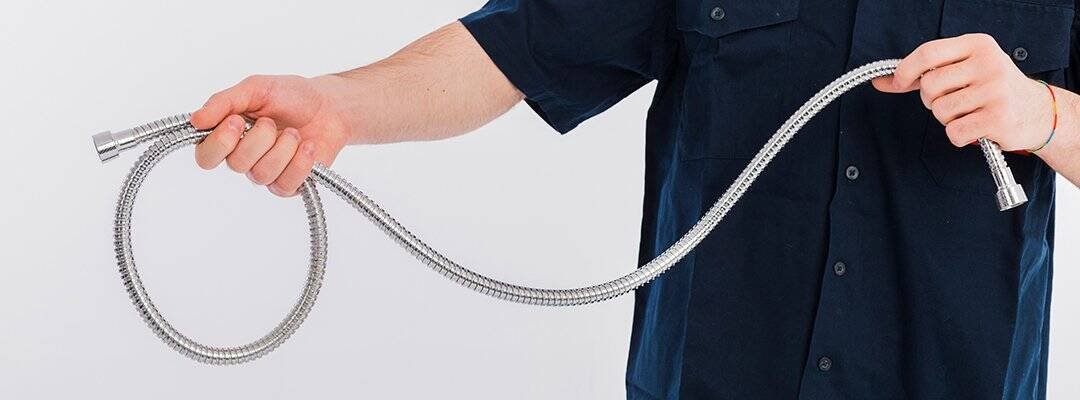
Key Technical Features that Define Quality
- Anti-kink design: High-quality hoses include anti-kink or tangle-free features. Some premium brands add ball bearings inside the connectors, allowing free rotation and effectively eliminating twisting and knotting.
- Connector quality: Connectors play a critical role in durability and leak prevention. Cheap plastic connectors can crack when over-tightened or leak due to poorly made threads. In contrast, connectors made from high-quality metals like brass deliver strength, pressure resistance, and reliable watertight seals.
Health and Safety Certifications: The Hidden Value
The true value of a shower hose often lies in what’s unseen—whether it meets drinking-water hygiene standards. Certifications guarantee that materials in contact with water do not release harmful substances.
- Why it matters: Low-cost hoses may leach plasticizers or other toxins, which can enter the body through water or steam and pose long-term health risks. Choosing a certified hose is a smart investment in health.
Key certification systems include:
| Certification | Country/Organization of Origin | Guarantee | Meaning for Consumers |
|---|---|---|---|
| NSF/ANSI 61» | National Sanitation Foundation, USA | Ensures products do not leach unsafe levels of lead or contaminants into drinking water | Guarantees hygienic and safe drinking water, compliant with U.S. and Canadian health standards |
| KTW» | German Federal Environment Agency | Ensures the hygienic safety of plastic and silicone materials and prevents microbial growth | Ensures clean water quality, preventing harmful leaching and bacterial growth |
| ACS» | French Health Compliance Certification | Ensures materials do not alter the fundamental properties of water | Guarantees water purity and prevents chemical substances from affecting water quality |
The Economics of Quality: Balancing Price and Value
Shower hose prices vary widely—from under 20 RMB to several hundred or more. Judging quality based solely on price is one-sided. To truly understand why an apparently expensive product carries greater value, you need to look deeper into the factors driving its price.
Price Drivers
- High-quality materials: Premium hoses cost more due to superior raw materials. Solid brass connectors are far pricier than plastic, and non-toxic, drinking-water-grade inner tubes cost more than ordinary plastics.
- Advanced manufacturing and quality control: High-end brands follow strict systems like ISO 9001 and perform rigorous tests—burst pressure, tensile strength, and aging—to ensure performance and durability.
- R&D and patented technology: Features like anti-kink designs or special coatings come from ongoing research and development, with IP costs reflected in the price.
- Brand reputation and after-sales service: Brands like Hansgrohe and Grohe charge more for quality standards, decades of trust, and comprehensive after-sales support.
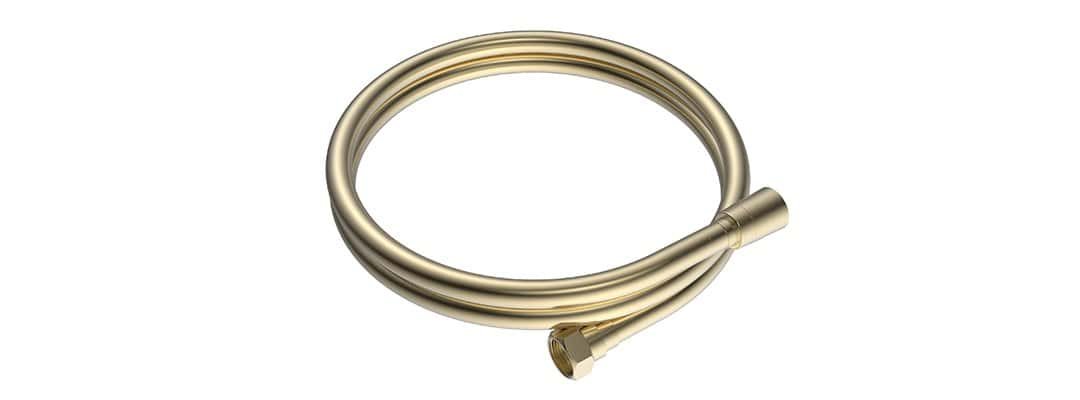
The Real Cost of Cheap Hoses
Low-cost hoses may seem attractive, but their true cost tells a different story. Many crack or leak within months, leading to repeated replacements, reinstallations, frustration, and water waste.
Over ten years, replacing a cheap hose annually costs far more than buying a premium hose that lasts a decade. Leaks can also cause water or structural damage, with repairs exceeding any initial savings.
Smart consumers look at the total lifecycle cost and see that investing in a high-quality hose delivers greater long-term value.
Frequently Asked Questions and Expert Troubleshooting
Even high-quality shower hoses may develop common issues after long-term use. By applying the right diagnostic and repair methods, users can quickly resolve problems and avoid unnecessary replacements.
Leaks at the Connection
- Diagnosis: Connection leaks usually stem from loose fittings, worn gaskets, or overtightening—especially on plastic connectors—which can cause tiny cracks.
- Solution: First, check that the connector is hand-tightened. If it still leaks, replace the gasket. PTFE tape won’t help, as it’s for threaded seals, not gasket-based connections. If the leak persists, the connector may have a hidden crack, and replacing the hose is the best solution.
Reduced Water Pressure
- Diagnosis: Low water pressure usually results from twisted or kinked hoses that restrict flow, or mineral buildup inside the hose.
- Solution: Check the hose for twists or kinks and straighten it. If pressure remains low, clean the hose thoroughly. Also inspect the showerhead for clogs and ensure the home’s pressure regulator is working properly.
Hygiene Issues: Mold and Dirt
- Diagnosis: Warm, humid bathrooms promote mold and mildew, while hard water leaves white or gray scale, especially in metal hose grooves.
- Solution: Regularly maintain the hose. Soak it in equal parts white vinegar and warm water for 30+ minutes to remove dirt and mineral deposits. For stubborn stains, gently scrub with a baking soda paste.
- Tip: Avoid steel wool or harsh chemicals, which can damage the surface. Wipe the hose dry after each use to prevent mold and scale.
Installation and Long-Term Maintenance Guide
Correct installation and regular maintenance are essential to extending the lifespan of a shower hose.
Step-by-Step Self-Installation Guide
- Preparation: Before starting, prepare the new hose, a soft cloth, and, if necessary, a wrench. The most important first step is to turn off the water supply to the shower system.
- Flush the Pipeline: Flush the plumbing system before installation to remove impurities that could damage the new hose or shower faucet.
- Remove the Old Hose: Unscrew the old hose counterclockwise by hand. If it feels stuck, wrap the connector with a soft cloth and use a wrench to assist, preventing scratches on the showerhead or faucet surface.
- Install the New Hose: Place the sealing ring inside the connector of the new hose. Screw the smaller end onto the shower faucet and the larger end onto the showerhead. Tighten by hand only—avoid overtightening, which can damage the gasket or connector.
- Final Check: Slowly turn the water supply back on and check both ends of the hose for leaks. If leaks appear, gently tighten the connection a little more.
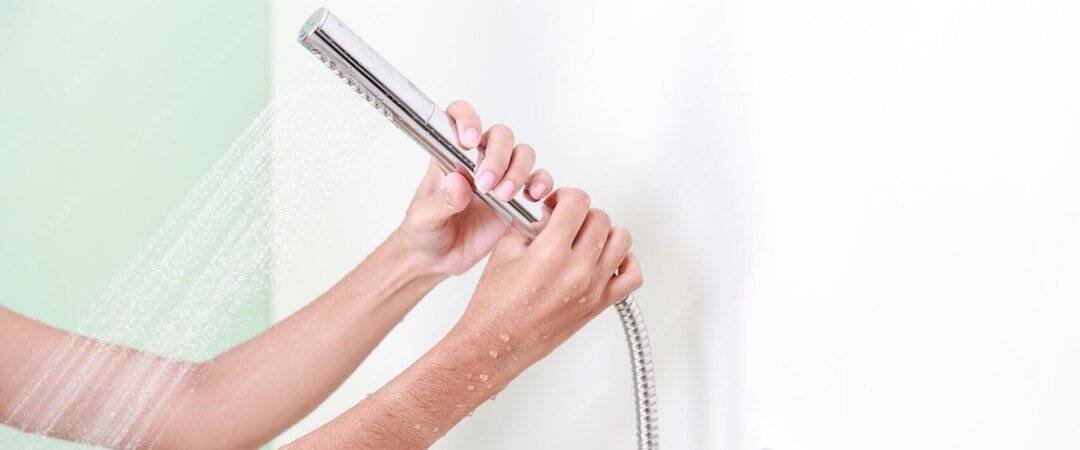
Maintenance for Extended Lifespan
- Regular Cleaning: Clean the hose regularly using mild cleaning solutions, as described earlier.
- Avoid Excessive Stretching: Do not pull the hose forcefully or hang heavy objects on it, as this puts unnecessary strain on the inner and outer tubing.
- Proper Storage: When not in use, let the hose hang naturally to avoid bending or tangling.
Conclusion: The Final Consideration for a Wise Investment
The shower hose, often overlooked, is a key component that shapes the shower experience, ensures home safety, and protects family health. Its true value goes far beyond price and appearance.
Premium hoses deliver value through superior materials, precise manufacturing, and a focus on user health. Stainless steel hoses offer unmatched durability and style, while high-quality plastic hoses excel in lightness and easy cleaning. Choosing hoses with drinking-water safety certifications ensures clean water and safeguards family health.
The principle of “you get what you pay for” applies: treating a shower hose as a long-term home investment provides lasting comfort, peace of mind, and convenience. This knowledge helps consumers make confident, cost-effective decisions.
👉 Explore the following shower systems» equipped with high-quality shower hoses.







